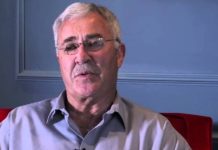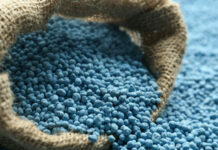
[miningmx.com] — PARLIAMENTARIANS examining the environmental threat of rapidly-rising acid mine water on the Witwatersrand appear set to focus their attention on three mines.
These are Rand Uranium, ERPM and Grootvlei.
Interrupting a briefing by senior water affairs official Marius Keet on Tuesday, the chairperson of Parliament’s water and environmental affairs committee, Johnny de Lange, sought to establish the extent of the problem.
“In the Western Basin, you’ve got one problem, which is Rand Uranium; in the Central Basin the problem is ERPM; and, in the Eastern Basin, it’s Grootvlei. Are they the three problems?” he asked.
Keet confirmed they were, but said when it came to acid mine drainage – the legacy of more than a century of mining activity – he did not want to apportion liability.
De Lange cut him short, saying he needed to establish the plain facts.
“This is not a court at the moment, not yet; so I’m trying to get the facts. You need to be open and honest with me about the facts. Those are the three problem areas?”
“Correct, chair,” Keet replied.
De Lange’s committee is holding three days of public hearings on acid mine drainage.
The Chamber of Mines and the owners of the mines operating in the areas affected are set to appear before it on Tuesday next week.
The basins referred to by De Lange are areas of interconnected mining tunnels underlying the Witwatersrand. Johannesburg is located atop the so-called Central Basin.
The acid water in the Western Basin, below the Krugersdorp-Randfontein area, started decanting in 2002.
Keet told the committee on Tuesday that of the 30 million litres of highly acidic water overflowing in this basin each day from Rand Uranium’s property, only 12 million litres was being partially treated.
Seeking clarification on this, De Lange asked: “The point is they (Rand Uranium) are only treating 12 million litres; the other 18 million litres is running into the rivers?”
Keet said this was correct.
According to a document tabled at the hearings, the water decanting in the Western Basin has a pH of 3.5 – the same acidity as vinegar.
Water scientist Henk Coetzee told MPs on Tuesday that the Tweeloopies Spruit, which runs through the Krugersdorp Game Reserve, was “no longer a functioning ecosystem…for several kilometres” as a result of the acid mine drainage.
According to a report titled “Mine Water Management in the Witwatersrand Gold Fields with Special Emphasis on Acid Mine Drainage”, compiled by a group of experts and presented to Cabinet in February this year, the acid mine drainage problem needs urgent attention.
If left unchecked, the billions of litres of rapidly-rising acid mine water in the Central Basin under Johannesburg will start flooding the lower levels of the Gold Reef City tourist mine early next year.
Shortly thereafter, it will pass through an “environmentally critical” level before starting to flow out on the surface.
Among the short-term solutions the report offers is pumping out water from the old workings, partially treating it, and discharging it into the region’s river system.
Partially treating the water means making it pH neutral, a process which will also result in the precipitation of dissolved metals and contaminants. But this will not rid the water of its high sulphate content. Estimates are the acid mine water in the Central Basin contains 3,700 milligrams of sulphate per litre.
Keet told the committee that desalinating the water before discharging it formed part of the department’s medium to long-term plans, and would only start in 2040.
Among recommendations contained in the experts’ report, is one to impose an environmental levy on operating mines to help cover the costs of dealing with problems such as acid mine drainage.
Keet said acid mine water started rising up rapidly in the Central Basin, under Johannesburg, in October 2008, after the ERPM mine stopped pumping.
It had been doing so at the rate of 60 million litres a day, before ERPM was ordered by the department of mineral resources, to stop mining until they had improved their underground ventilation system.
“They couldn’t do it in time and the pump station was flooded, and they lost the pump,” Keet explained.









